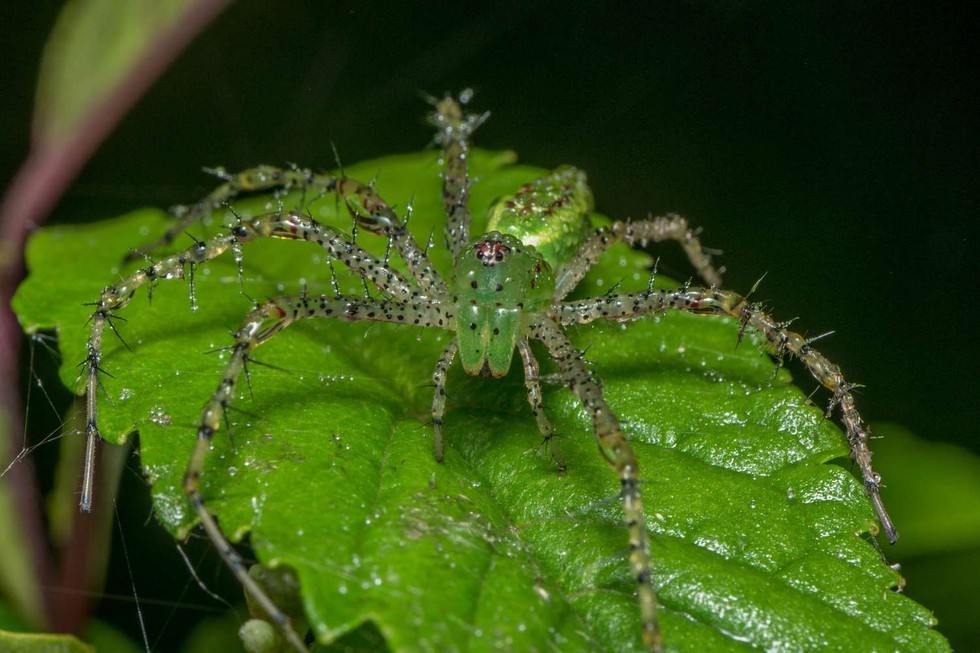In the lush forests of the Amazon, Dr. Maria Lopez, a researcher affiliated with the Amazonian Institute of Tropical Studies (AMT), recently uncovered a previously unknown species of spider. This discovery has captivated the scientific community and shed new light on the biodiversity of the region.
Dr. Lopez’s Expedition
Dr. Lopez made the discovery during an extensive field expedition deep into the heart of the Amazon rainforest. Her observation of a vibrant emerald-hued spider amidst the foliage led to the confirmation of a new species, the green lynx spider.
Characteristics of the Green Lynx Spider
The newfound species, formally designated as Peucetia viridis amazonica, exhibits remarkable adaptations for survival. It possesses keen eyesight, lightning-fast reflexes, and employs ambush tactics to capture prey, including insects and small arthropods. Its green coloration serves as both camouflage and a warning to predators of its venomous capabilities.
Significance of the Discovery
News of Dr. Lopez’s discovery has sparked discussions on the importance of biodiversity conservation in the Amazon rainforest. Efforts are underway to study the ecological role of the green lynx spider and assess potential threats to its survival, such as habitat loss and climate change.
Conclusion
The discovery of the green lynx spider highlights the beauty and complexity of life on Earth. Dr. Lopez’s work underscores the critical importance of preserving biodiversity for future generations.
Multiple Choice Questions (MCQs):
- What is the formal designation of the newfound green lynx spider species?
A) Amazonia viridis
B) Peucetia viridis amazonica
C) Araneae emeraldus
D) Lynx spiderensis
Answer: B) Peucetia viridis amazonica
2. What characteristic distinguishes the green lynx spider?
A) Red coloration
B) Lightning-fast flight
C) Vibrant emerald hue
D) Slow-moving behavior
Answer: C) Vibrant emerald hue
3. How does the green lynx spider capture its prey?
A) By spinning elaborate webs
B) By emitting pheromones
C) Through ambush tactics
D) By forming symbiotic relationships
Answer: C) Through ambush tactics
4. What does the green coloration of the spider primarily serve as?
A) A warning to predators
B) A form of communication
C) A camouflage
D) An attractant for prey
Answer: C) A camouflage
5. What is one potential threat to the survival of the green lynx spider?
A) Overpopulation
B) Habitat loss
C) Excessive rainfall
D) Increased sunlight exposure
Answer: B) Habitat loss
